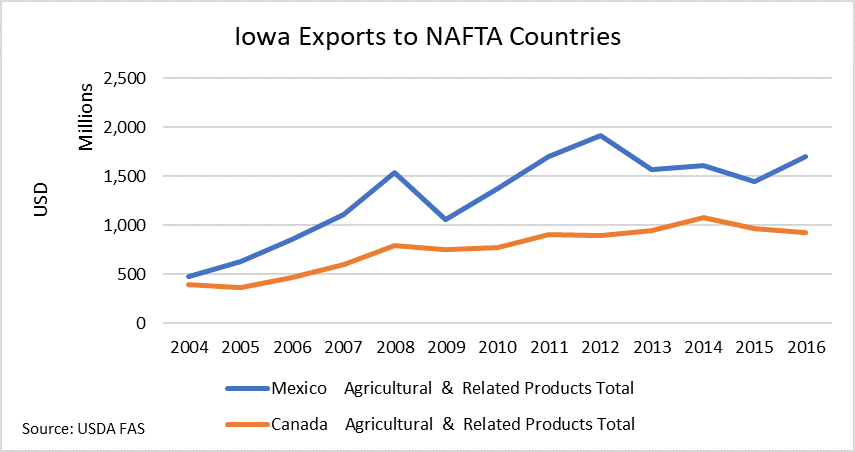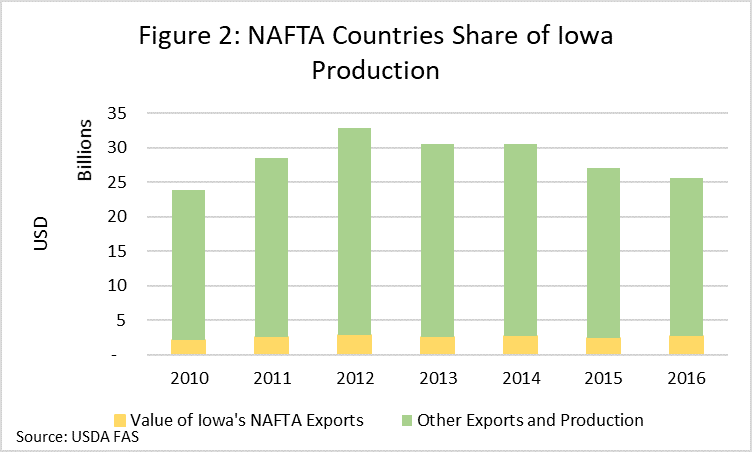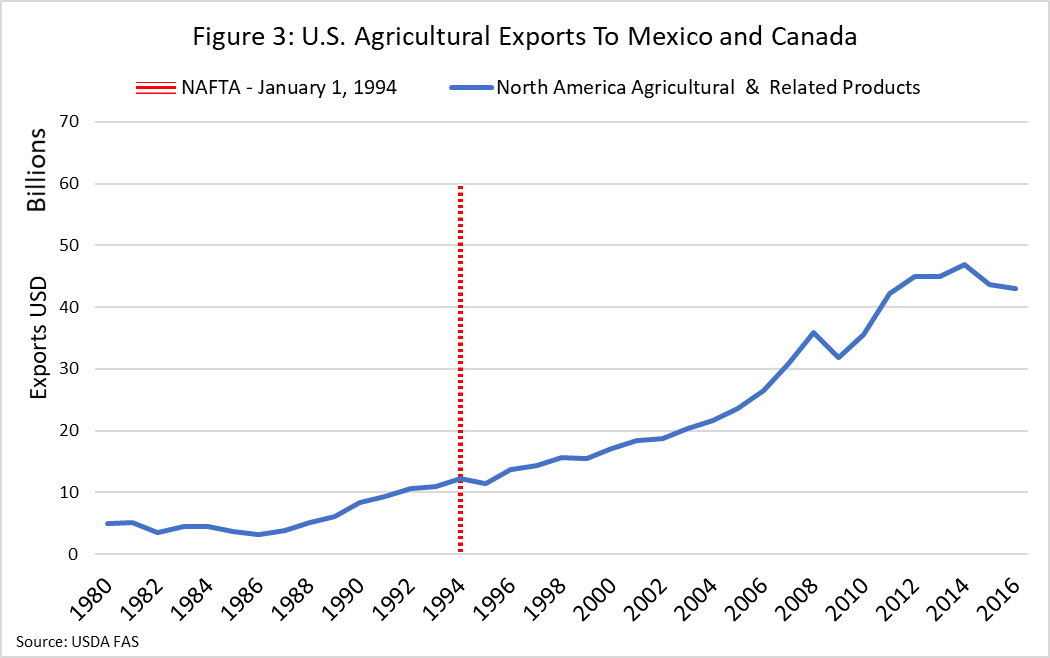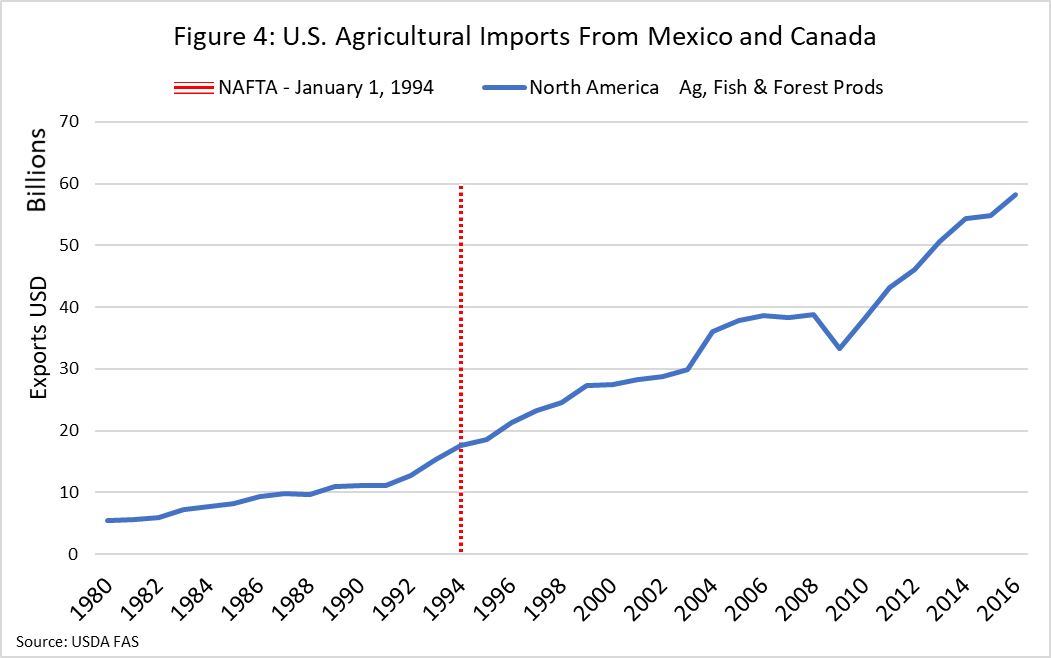In the past half century, United States agriculture has rapidly increased in productivity output. With significant advantage and diversity in agricultural production opportunities provided by a diverse geographical landscape. The United States has competitive advantage in crop and animal production over many other locations around the planet starting from the soil under our feet. However, in some cases other countries are able to produce ag-commodities more efficiently than the U.S. Therefore, sharing in the world food production burden is made possible with trade. Domestic U.S. production far exceeds the ability of our population to consume. If we do not keep trade strong and continue to increase the global interconnectedness, prices will plummet as supply skyrockets.
Of course, trade still occurs without trade agreements, but if we remember back to estimations made about what the Transpacific Trade Partnership (TPP) would have added to U.S. agriculture. TPP was estimated to create an increase of $360 million in Iowa alone (article here), and $3.6 billion in the U.S. (for only the commodities: corn, soybeans, beef, pork, and dairy).

According to the USDA, Iowa exports to Canada and Mexico have increased 23 percent or nearly $500 million. Additionally, trade to Canada and Mexico make up roughly 10 percent of total agricultural production in Iowa. Although a small portion of total ag-production receipts for it is a significant portion of the market. If lost surely would add more supply to U.S. markets, decreasing crop and livestock prices.

Agricultural exports to Canada and Mexico from the U.S. have increased 252 percent, or $31 billion between the years 1994 and 2016. Not all of the increase can be attributed to NAFTA alone, however, with greater freedom between borders, market access provided by NAFTA has allowed U.S. agriculture added room to grow.


This growth has occurred in both imports and exports, Canada has also been able to access U.S. markets with decreased restriction resulting in a 233 percent increase, or $40 billion between 1994 and 2016. With added border freedom, there also comes greater levels of collaboration between countries. For example, livestock being raised to a certain age and weight in the U.S. and being fed U.S. and Canadian grain, being slaughtered and rendered in Mexico, then shipped to Canada for final consumption. There are many different scenarios used to create greater efficiency. This occurs, in many cases, as industries find economic efficiency advantages based on the strengths and weaknesses of each country, whether that be labor cost, technology, infrastructure or other aspects of production.
Trade facilitates advances in agriculture as a higher level of collaboration can occur with less restrictions, the case of trade occurring under free trade agreement conditions. Every opportunity that can be taken to discuss the benefits of trade with people who do not fully understand the relationship is beneficial to the public understanding of trade, which can be painted as a negative at times. Cooperation, both strengthens and secures food supplies around the world.

